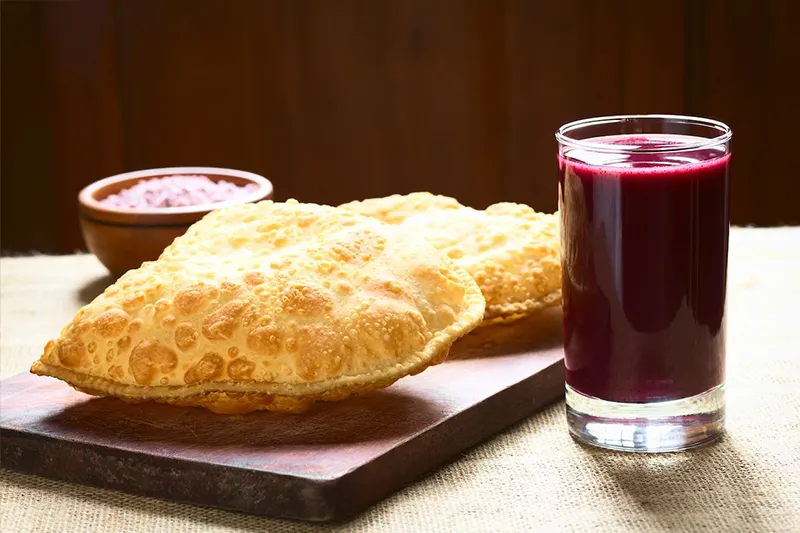Nestled high among the mountain peaks, Andean morning meals offer a unique culinary experience. These breakfasts are not just about nourishment; they encapsulate centuries of tradition. Andean Morning Meals delves deep into this high-altitude cuisine.
Each ingredient tells a story, revealing secrets of the Andean way of life. From hearty grains to herbal infusions, these dishes are more than just sustenance.
Quinoa and Beyond: Staple Grains of the Andean Plate
Nestled within the soaring Andes, a treasure trove of grains thrives. Central to this collection is quinoa, often termed the “mother grain”. Its significance in Andean morning meals is unparalleled, playing a pivotal role in regional nutrition for millennia.
But why does quinoa stand out? For one, its rich protein content and versatility. Cooking with Quinoa unveils countless preparation methods, from fluffy breakfast porridges to savory side dishes. Its adaptability seamlessly fits into any meal, especially Andean morning meals.
Historical records speak of its prominence. Dubbed “gold of the Incas”, quinoa was more than food. It was Inca nutrition, strengthening warriors and nourishing communities. Such esteem highlights its intrinsic value in the Andean diet.
Beyond quinoa, other grains paint the Andean food canvas. Amaranth, with its nutty flavor, complements many traditional dishes. Then there’s canihua, lesser-known but equally nutritious. These grains, alongside quinoa, form the backbone of Andean morning meals.
Yet, the story doesn’t end with just the grains. It’s also about preservation techniques. The Andeans developed methods like chuño, freeze-drying potatoes at high altitudes. This ingenuity extended the shelf life of their food, ensuring sustenance year-round.
The Andean plate isn’t just about sustenance. It’s a testament to adaptability, innovation, and respect for nature. The grains, especially quinoa, symbolize a rich history and a promising future. Through Andean morning meals, this legacy lives on, inviting the world to partake in its goodness.

From Warm Api to Toasted Canchita: Diverse Andean Delights
The Andes, with its varying altitudes, gifts a bounty of culinary wonders. At dawn, these treasures transform into Andean meals, an array of flavors and textures. Among them, warm Api stands out, a comforting beverage made from purple corn, often paired with delicious pastries.
Toasted Canchita, another favorite, is essentially roasted corn. Crunchy and lightly salted, it complements many traditional dishes. Beyond these, there’s Moraya, a freeze-dried potato. Historically, Andeans developed it to preserve potatoes, highlighting their innovation and adaptability.
Andean morning meals also feature a potent mix of maca and quinoa. Maca, a root vegetable, is often turned into a revitalizing drink. It’s hailed for its energy-boosting properties, especially in the mountainous regions. Quinoa, on the other hand, needs no introduction. Its versatility makes it a staple, be it in porridges or side dishes.
Yet, what’s truly captivating about Andean meals is the blend of tradition and nourishment. Every ingredient, every dish has a story rooted in centuries of culture. The Andean people, despite the challenging terrain, have harnessed nature to their advantage. From using maca for stamina to innovatively preserving Moraya, their culinary wisdom is admirable.
In a world increasingly looking towards superfoods, the Andes has been ahead of the curve. Andean morning meals are not just about filling the stomach. They are about connection, history, and a deep appreciation of nature’s offerings. Each sip of Api, every bite of Canchita, brings one closer to the heart of the Andes.

Flavors of Altitude: How Geography Shapes Andean Breakfast Dishes
The Andean region, marked by high peaks and deep valleys, offers diverse ecosystems. These landscapes directly influence Andean morning meals, creating a rich tapestry of flavors. The altitude and varied climate foster unique ingredients, which are hard to find elsewhere.
Take Alpaca meat for instance. Thriving in high altitudes, alpacas provide lean and flavorful meat. Often consumed in stews and soups, it’s a staple in Andean morning meals. Its taste reflects the mountain pastures, offering a distinct, earthy note.
Beyond these, geography plays another role: in cultivation techniques. The terraced farming, developed ages ago, maximizes land use in the steep Andes. Crops like quinoa and potatoes thrive in these terraces, becoming essential components of Andean morning meals.
But geography doesn’t only dictate ingredients. It influences preparation methods too. Ingredients are often preserved to withstand harsh winters, leading to dishes like freeze-dried potatoes or sun-cured meats. These methods, borne from necessity, add unique textures and flavors to Andean dishes.




